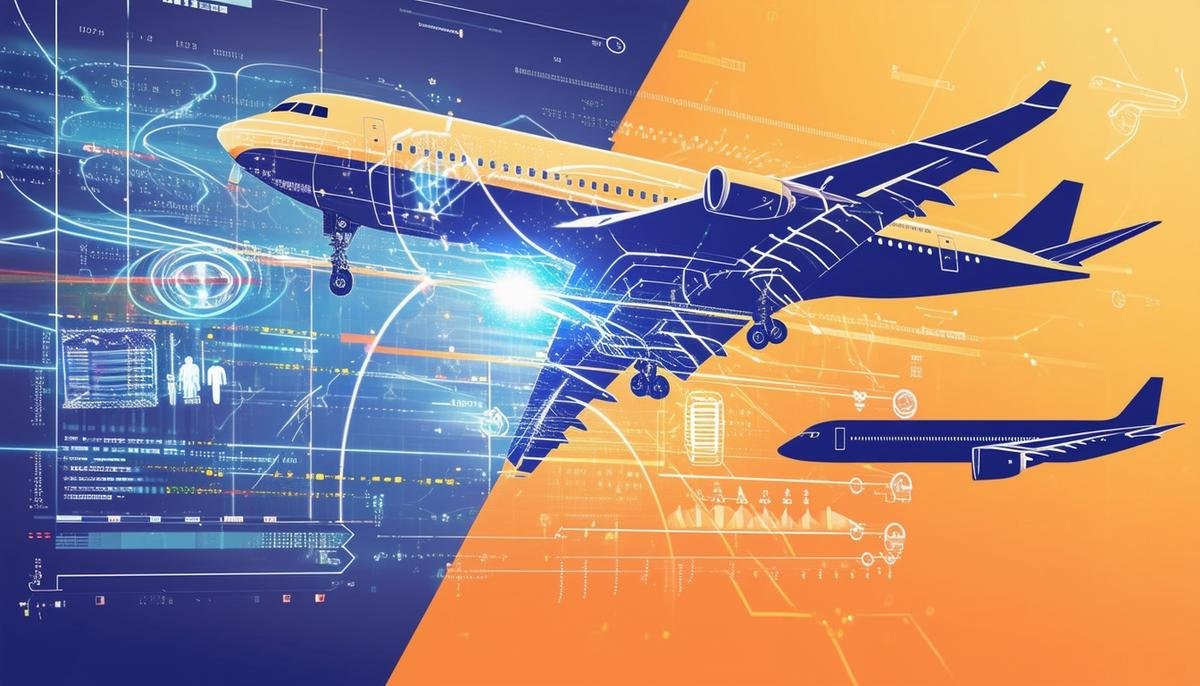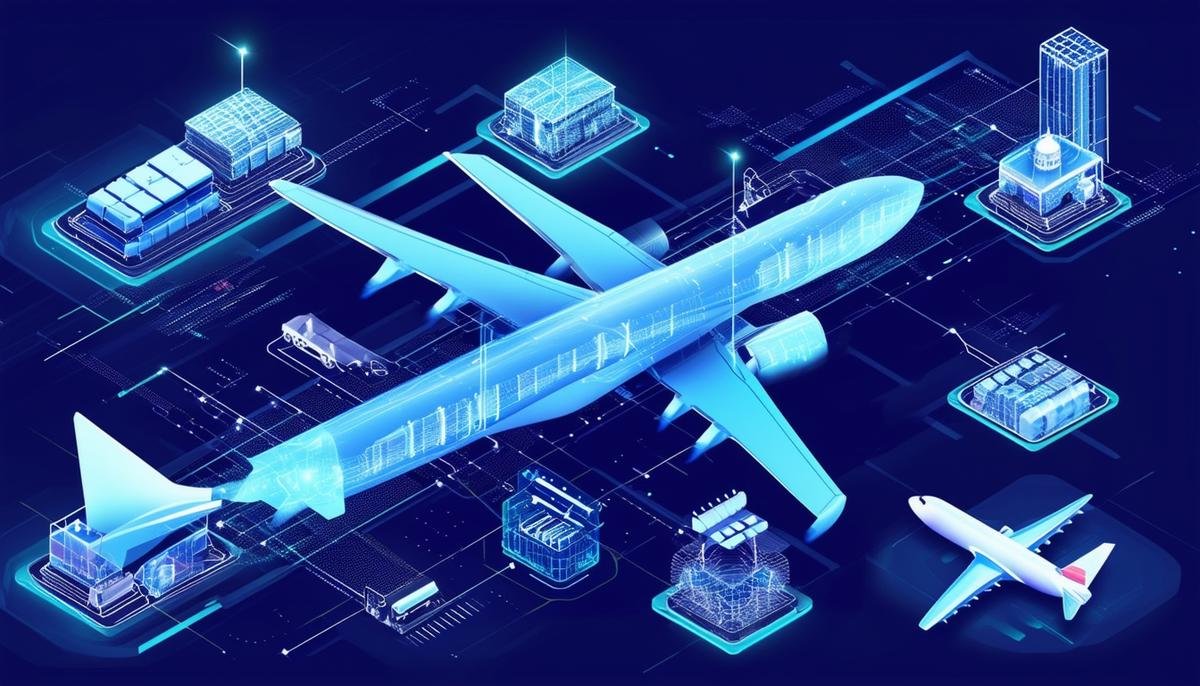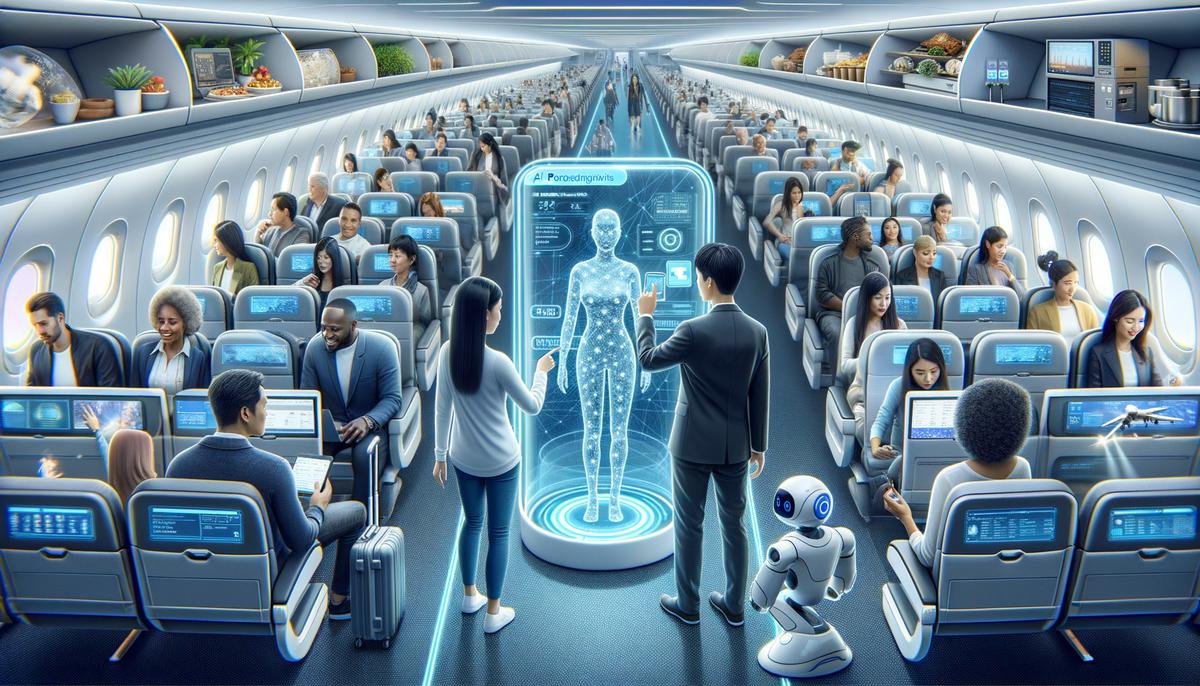AI in Enhancing Aviation Safety
AI plays a crucial role in enhancing aviation safety through predictive maintenance, real-time data analysis, risk assessment, and decision support. By processing data from aircraft sensors, AI can predict component failures, allowing timely maintenance scheduling. This proactive approach reduces unscheduled downtimes and enhances overall safety.
Real-time data analysis is vital, with AI algorithms processing massive data from flight records, engine performance, and weather conditions to detect potential issues. Sensors continuously monitor engine health, and AI can identify slight deviations that might indicate an impending problem, enabling prompt action before issues escalate.
In risk assessment, AI excels by evaluating data from numerous flights to identify patterns that could signify risk factors. Flight recorder data, such as altitude changes and engine temperature, can reveal trends that human analysts might miss, enabling AI to flag higher-risk routes or conditions.
This risk assessment extends to predicting weather impacts, allowing pilots to make informed decisions regarding flight paths to avoid potential hazards. AI can also provide real-time decision support for pilots, processing cockpit data streams and providing actionable insights, such as recommending the nearest suitable airport for landing if an issue arises.
AI is enhancing communication between air traffic control and pilots by enabling real-time data sharing, improving situational awareness for coordinated responses to sudden changes.
Optimizing flight paths is another area where AI contributes, suggesting efficient routes based on air traffic, weather, and fuel consumption data, reducing costs and emissions.
AI can identify human factors impacting safety, such as monitoring pilots’ physiological data for signs of fatigue or distress, prompting interventions as needed.
Automation of routine tasks like pre-flight inspections allows pilots and crews to focus on critical tasks requiring human judgment, further improving safety.

AI in Optimizing Operational Efficiency
AI revolutionizes operational efficiency through optimizing flight paths, reducing fuel consumption, and streamlining ground operations. Algorithms can assess various factors to propose the most efficient routes, resulting in shorter flights, lower fuel costs, and reduced emissions.
Fuel efficiency is significantly improved by AI systems that analyze factors like aircraft weight, wind speed, and altitude changes to determine the most fuel-efficient methods.
AI’s impact is evident in managing ground operations, from baggage handling to aircraft turnaround time. Predictive analytics and optimized resource allocation lead to fewer lost bags, faster processing times, and reduced delays.
In air traffic management, AI technologies help coordinate aircraft movements, reduce congestion, and improve timing precision, subsequently lowering fuel consumption and enhancing flight efficiency.
AI applications in airport logistics bring smarter operations. Predictive analytics can anticipate passenger flow and allocate resources accordingly, minimizing bottlenecks and waiting times.
These innovations lead to reduced travel times, lower operational costs, and improved customer satisfaction, benefiting airlines, airports, and passengers alike.

AI in Enhancing Passenger Experience
AI enhances the passenger experience by personalizing customer service, automating check-in processes, and enriching in-flight entertainment. AI-powered chatbots offer real-time assistance with booking flights, answering queries, and managing reservations, streamlining customer service.
Automation of check-in processes, including AI-driven facial recognition for identity verification, allows passengers to check in and board swiftly and securely.
AI plays a crucial role in personalizing the in-flight experience by recommending tailored entertainment options based on passenger preferences and viewing habits.
Real-time updates provided by AI systems keep passengers informed about flight changes, gate information, and boarding times, reducing travel-related anxiety.
Automation of in-flight services enables flight attendants to predict passenger needs and preferences accurately, allowing for a more customized service.
AI’s contributions to baggage handling ensure passengers’ luggage arrives with them and provide continuous updates about the location of their bags, reducing lost or delayed baggage.

Future Trends: AI and Urban Air Mobility
The potential of AI in developing self-flying vehicles for urban transportation is a fascinating frontier in aviation innovation. AI algorithms enable autonomous navigation by processing data from sensors, interpreting traffic patterns, identifying obstacles, and adapting to changing conditions, ensuring a smooth and safe journey.
However, integrating AI into urban airspaces presents challenges, such as:
- Handling complex urban environments
- Ensuring robust communication with air traffic control systems
- Gaining public acceptance and regulatory approval through extensive testing and validation
Despite these challenges, the implications for short-distance travel are profound. AI-powered self-flying vehicles can drastically reduce travel times, alleviate urban infrastructure burden, and promote sustainable urban development by reducing traffic congestion and emissions.
In logistics, AI-driven urban air mobility could provide rapid delivery services, streamlining supply chains and boosting economic productivity.
As innovation continues, integrating AI in urban air mobility holds the promise of transforming urban landscapes, making short-distance travel more efficient, safer, and sustainable.

Ethical and Regulatory Considerations
Integrating AI into aviation requires addressing ethical and regulatory considerations to ensure responsible and safe implementation. Data privacy is a central concern, requiring robust data protection policies to safeguard sensitive information like passenger data and biometric data.
Algorithmic transparency is crucial to build trust and ensure accountability. AI systems must operate transparently, with understandable and verifiable decision-making processes.
Collaboration among industry stakeholders is essential to develop comprehensive guidelines and standards for AI usage in aviation. Regular dialogue and cooperation can address emerging ethical dilemmas, such as avoiding biases in AI systems, ensuring equitable access to AI-driven services, and maintaining passengers and crew’s overall welfare.
As AI becomes more entrenched in aviation, ensuring ethical and transparent practices, protecting data privacy, and fostering industry collaboration will be imperative. These measures will enhance the technology’s benefits and fortify the aviation industry’s commitment to safety and trustworthiness.
References
- Hou M, Liao F, Zhang D, et al. Predictive maintenance of aviation systems based on machine learning. IEEE Access. 2021;9:9401-9418.
- Kumbhar N, Gupta S, Ghumatkar A, et al. Biometrics and artificial intelligence in aviation industry. Intell Syst Ref Libr. 2018;154:301-326.
- Mao Y, Jacobs C, Gonçalves G, et al. Systematic literature review on the capabilities of artificial intelligence in aviation for situational awareness and decision support. IEEE Access. 2022;10:65481-65507.
- Puranik T, Jituri S, Moudgalya K. Artificial intelligence for tactical and strategic decision making in air traffic control. Sadhana. 2019;44(7):144.
- Zhang L, Sun M, He X, et al. Artificial intelligence in urban air mobility: a survey. IEEE Trans Intell Transp Syst. 2022;23(12):17701-17723.




